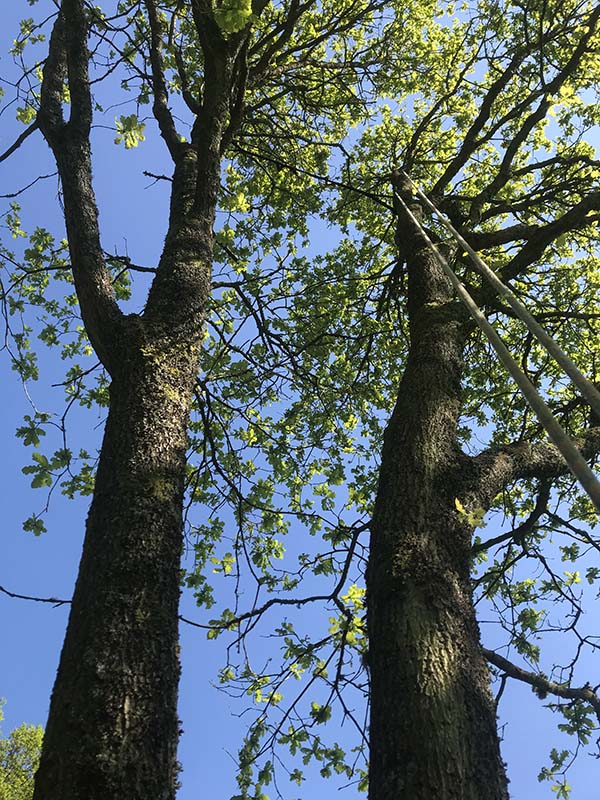In this short read, we will delve into some of the most prevalent tree health problems – pests, diseases, and nutrient deficiencies – and provide tips on identifying them early. As knowledgeable tree surgeons in Horsham, we aim to help you recognise these issues and take appropriate action before they harm your beloved trees.
Pests- Silent Threats to Tree Health
Pests can inflict significant damage to trees and weaken their overall health. Common tree pests include:
- Aphids: These small insects suck the sap from leaves, causing deformities and yellowing.
- Psychidae: These caterpillars construct protective bags on tree branches, consuming foliage and causing defoliation.
- Gypsy Moths: These voracious eaters defoliate trees, particularly oak and deciduous varieties, causing severe stress.
To spot pest infestations, keep an eye out for stunted growth, wilting or yellowing leaves, holes in the trunk or branches, and the presence of cocoons or eggs. Regularly inspecting your trees and seeking professional guidance are crucial for early detection and prompt treatment.
Diseases- Recognising the Signs
Tree diseases are caused by various pathogens, such as fungi, bacteria, and viruses. Some common tree diseases include:
- Dutch Elm Disease: A vascular wilt disease caused by a fungus, leading to yellowing and wilting of leaves and eventual death.
- Apple Scab: Caused by a fungus, it results in black, scaly lesions on the leaves, fruit, and twigs of apple trees.
Keep an eye out for wilting or discoloured leaves, lesions on bark or leaves, or any signs of cankers. Timely diagnosis and appropriate treatments, such as pruning infected branches, can help control the spread of diseases and potentially save the tree.
Nutrient Deficiencies- Feeding Your Trees
Nutrient deficiencies can weaken trees, making them more susceptible to pests and diseases. Some common deficiencies include:
- Nitrogen: Yellowing leaves, stunted growth, and overall poor vigour.
- Phosphorus: Purplish or reddish leaves, slow growth, and weak root systems.
- Potassium: Yellowing edges on foliage, reduced disease resistance, and weak branches.
- Iron: Yellowing leaves with green veins (chlorosis), particularly noticeable on younger leaves.
Regular soil testing and observing visible symptoms, like leaf discoloration or stunted growth, can help identify nutrient deficiencies. Balancing soil pH and providing appropriate fertiliser treatments can restore the tree’s health.
In conclusion, as responsible tree owners, it is crucial to be vigilant and proactive in maintaining the health of our trees. By recognising the signs of common tree health issues like pests, diseases, and nutrient deficiencies, we can take timely action and save our trees from harm. However, it’s important to remember that accurate identification and treatment often require the expertise of a professional tree surgeon. If you notice any alarming signs or have concerns about your trees, seeking the advice of a certified tree surgeon in Horsham is your best course of action.
Remember, healthy trees contribute to a thriving environment, provide shade, and enhance the beauty of our landscapes. Let’s work together to safeguard their well-being, contact Tree Marshalls today.






